The NVIDIA GeForce GTX 980 Ti Review
by Ryan Smith on May 31, 2015 6:00 PM ESTMeet The GeForce GTX 980 Ti
Like the rest of NVIDIA’s high-end cards in this generation, the reference GeForce GTX 980 Ti is launching with NVIDIA’s standard metal cooler. This design has served NVIDIA well since the launch of the GTX Titan in 2013 and continues to be the blower design to beat the high end, easily handling the 250W TDP of NVIDIA’s high-end cards without generating a ton of noise in the process.
As with so many other aspects of the GTX 980 Ti, the GTX 980 Ti’s cooler and build is a near-copy of the GTX Titan X. The only difference in the cooler is the paint job; GTX Titan X got a unique black paint job, while GTX 980 Ti gets the more standard bare aluminum finish with black lettering and a black-tinted polycarbonate window.
Otherwise there’s very little to be said about the GTX 980 Ti’s design that hasn’t been said before, so we’ll just recap what we said about the cooler design from our review of the GTX Titan X.
For GTX 980 Ti, NVIDIA has opted to leave well enough alone, having made virtually no changes to the shroud or cooling apparatus. And truth be told it’s hard to fault NVIDIA right now, as this design remains the gold (well, aluminum) standard for a blower. Looks aside, after years of blowers that rattled, or were too loud, or didn’t cool discrete components very well, NVIDIA is sitting on a very solid design that I’m not really sure how anyone would top (but I’d love to see them try).
In any case, our favorite metal shroud is back once again. Composed of a cast aluminum housing and held together using a combination of rivets and screws, it’s as physically solid a shroud as we’ve ever seen. The card measures 10.5” long overall, which at this point is NVIDIA’s standard size for high-end GTX cards.
Drilling down we have the card’s primary cooling apparatus, composed of a nickel-tipped wedge-shaped heatsink and ringed radial fan. The heatsink itself is attached to the GPU via a copper vapor chamber, something that has been exclusive to NVIDIA’s 250W cards and provides the best possible heat transfer between the GPU and heatsink. Meanwhile the rest of the card is covered with a black aluminum baseplate, providing basic heatsink functionality for the VRMs and other components while also protecting them.
Finally at the bottom of the stack we have the card itself, complete with the GM200 GPU, VRAM chips, and various discrete components. The GM200 PCB places the GPU and VRAM chips towards the front of the card, while the VRMs and other discrete components occupy the back. As with the GTX Titan X, GTX 980 Ti features NVIDIA’s reworked component placement to improve airflow to the discrete components and reduce temperatures, along with employing molded inductors.
NVIDIA once again employs a 6+2 phase VRM design, with 6 phases for the GPU and another 2 for the VRAM. This means that GTX 980 Ti has a bit of power delivery headroom – NVIDIA allows the power limit to be increased by 10% to 275W – but hardcore overclockers will find that there isn’t an extreme amount of additional headroom to play with. Based on our sample the actual shipping voltage at the max boost clock is a bit higher than GTX Titan X, coming in at 1.187v, so in non-TDP constrained scenarios there is some additional headroom through overvolting, up to 1.23v in the case of our sample.
In terms of overall design, unlike GTX Titan X and its 24 VRAM chips, for the GTX 980 Ti NVIDIA only needs to use 12 VRAM chips to get the card’s 6GB of VRAM, so all of the VRAM is located at the front of the card. Halving the RAM capacity simplifies the card a bit – there are now no critical components on the back – and it brings down the total VRAM power consumption slightly. However despite this, NVIDIA has not brought back the backplate from the GTX 980, having removed it on the GTX Titan X due to the VRAM chips it placed on the rear.
Moving on, in accordance with GTX 980 Ti’s 250W TDP and the reuse of the metal cooler, power delivery for the GTX 980 Ti is identical to its predecessors. This means a 6-pin and an 8-pin power connector at the top of the card, to provide up to 225W, with the final 75W coming from the PCIe slot.
Meanwhile display I/O follows the same configuration we’ve seen on the rest of the high-end GTX 900 series. This is 1x DL-DVI-I, 3x DisplayPort 1.2, and 1x HDMI 2.0, with a total limit of 4 displays. In the case of GTX 980 Ti the DVI port is somewhat antiquated at this point – the card is generally overpowered for the relatively low maximum resolutions of DL-DVI – but on the other hand the HDMI 2.0 port is actually going to be of some value here since it means GTX 980 Ti can drive a 4K TV. Meanwhile if you have money to spare and need to drive more than a single 4K display, GTX 980 Ti also features a pair of SLI connectors for even more power.
Finally, taking a look at the long term, I wanted to quickly hit upon the subject of the VRAM capacity difference between the GTX 980 Ti and the GTX Titan X. Essentially NVIDIA’s only remaining selling point for the GTX Titan X, the Titan will remain their only 12GB card for some time to come. For NVIDIA this means that they can pitch the GTX Titan X as a more future-proof card than the GTX 980 Ti, as it would be hard-pressed to run out of VRAM.
The question for the moment then is whether 12GB is worth a higher premium, let alone the GTX Titan X’s $350 premium. The original GTX Titan by comparison was fortunate enough to come out with 6GB right before the current-generation consoles launched, and with them their 8GB memory configurations. This lead to a rather sudden jump in VRAM requirements in games that the GTX Titan was well positioned to handle, whereas GTX 780 Ti and its 3GB of VRAM can struggle in the very latest games at 4K resolutions. Much like 6GB in 2013, 12GB is overkill in 2015, all the while 6GB is a more practical amount for a 384-bit card at this time.
But to answer the question at hand, unlike the original GTX Titan, I suspect 12GB will remain overkill for a much longer period of time, especially without a significant technology bump like the consoles to drive up VRAM requirements. And consequently I don’t expect GTX 980 Ti to have any real issues with VRAM capacity in games over the next couple of years, making it better off than the GTX 780 Ti, relatively speaking.


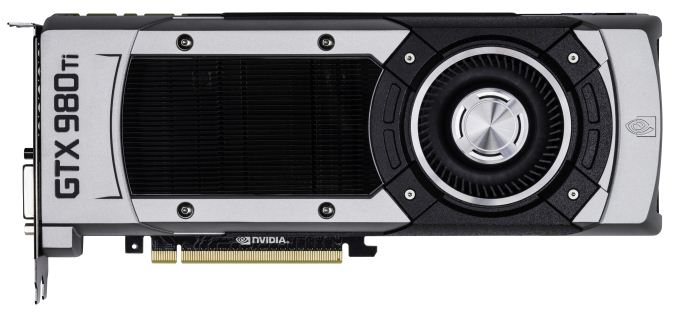
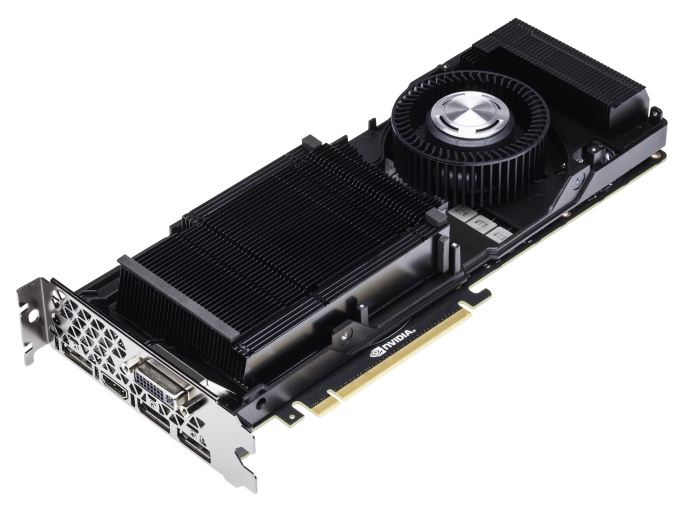
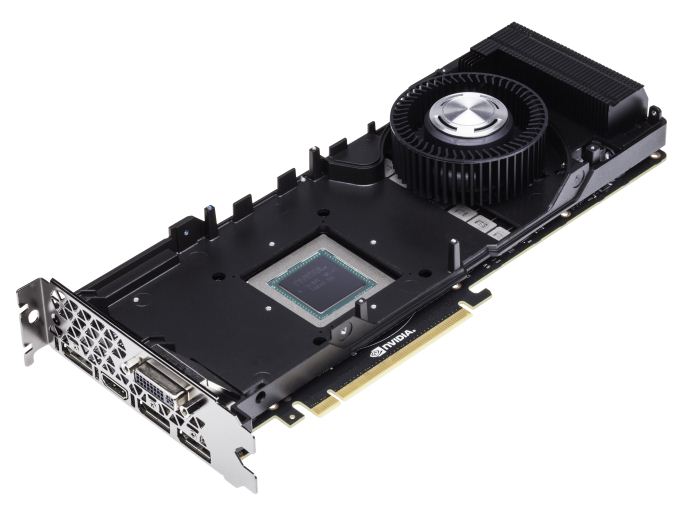
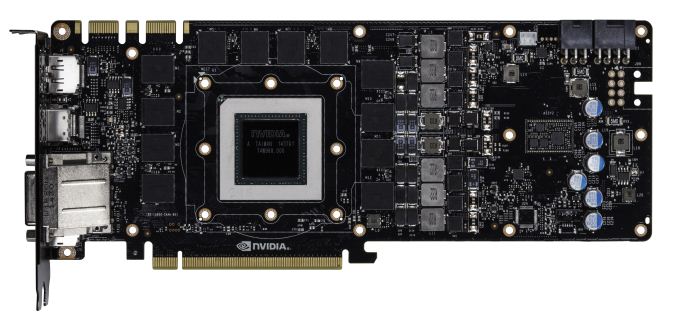

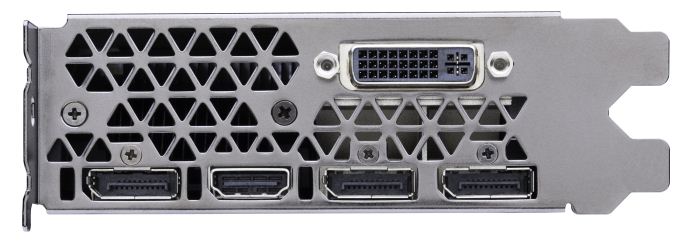








290 Comments
View All Comments
Oxford Guy - Monday, June 1, 2015 - link
I'm sure you posted that from your 65nm processor and 80nm GPU.godrilla - Thursday, June 4, 2015 - link
Because next shrink is in the 3d chips plus hbm category and that should be amazing performance leap.Gastec - Sunday, September 4, 2016 - link
Oh yeah, that's "1337 5p34k" for ya! :PWreckage - Sunday, May 31, 2015 - link
Wait until AMD tries to sell you a rebadge for that much.Rezurecta - Sunday, May 31, 2015 - link
I don't understand the rage about rebadge all of a sudden. GPU has been doing this for YEARS!Anyway, nice card from Nvidia for a decent price.
dragonsqrrl - Sunday, May 31, 2015 - link
Don't mix up traditional rebadging and what AMD is doing with their upcoming lineup, it's unprecedented. It's also worrisome, and it's clearly a big problem for AMD. What does it say about the state of the company and their R&D budget that they'll only have 1 new GPU this coming generation? One of the big problems AMD is currently facing, amongst many other things, are their profit margins. In order to compete they're selling larger, more expensive GPU's attached to more complex memory interfaces relative to the competition, and that won't change much this coming generation as a result of these top to bottom rebadges. The situation is really becoming quite analogous to their CPU's, which should raise alarms for any informed enthusiast. It's a less than ideal situation, to put it lightly.Azix - Sunday, May 31, 2015 - link
If you post this after their launch then maybe I'd understand. As it is their Chips are almost certainly not rebadged because they aren't on TSMC and will include hardware improvements. They maybe be based on hawaii or w/e but not even nvidia managed to put out more than 2 new cards during their major launch last year. Considering this is likely the last year of 28nm launches, it may make sense for them to put out an entire line of modified chips and be done with the 300 series. Keeping it fresh till next year when they can do 2-3 on a smaller process.dragonsqrrl - Sunday, May 31, 2015 - link
"If you post this after their launch then maybe I'd understand."You realize I could just give the exact same response to the rest of your comment. But I won't.
"As it is their Chips are almost certainly not rebadged because they aren't on TSMC and will include hardware improvements.",
That's interesting, I haven't heard anything about AMD switching fabs for the 300 series. Source?
"They maybe be based on hawaii or w/e but not even nvidia managed to put out more than 2 new cards during their major launch last year."
Not quite a straight comparison there, since Nvidia also launched a new architecture with the 750Ti. Thus far we've gotten 4 new GPU's (not just cards) based on Maxwell. And we're not just talking launch here. All indications point to Fiji as the only new GPU of the coming generation for AMD. And what's more, it might not even be an updated architecture. The rest of the lineup will likely be refreshes of Hawaii, Tonga, Pitcairn, and Bonaire, ranging from GCN 1.2-1.0, with at most manufacturing revisions to improve efficiency. Again it's very important to put this in perspective, in the context of what these GPU's will be competing against. They range in feature set, and in power efficiency, none of which is anywhere close to par with Maxwell, and it's going to be very difficult for AMD to compete with this lineup for another generation. It's not a good situation for AMD. "Keeping it fresh"? How you came to spin your conclusion the way you did is beyond me.
ImSpartacus - Monday, June 1, 2015 - link
Be nice. The guy is basically telling you at this point.ImSpartacus - Monday, June 1, 2015 - link
trolling***